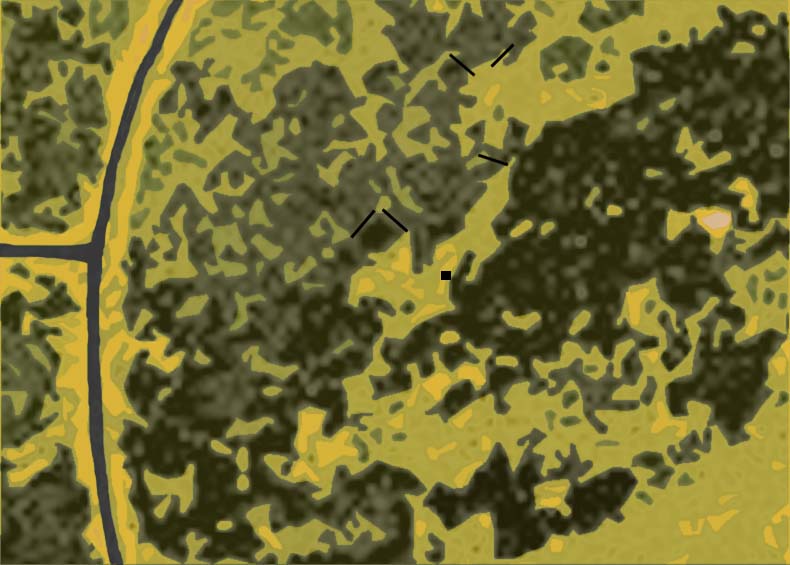An analysis of spring movement patterns
through the Ft Stevens banding station
Figure 1
Beginning
in 1989, I set mistnets in the willow wetlands east of parking lot C in
Ft Stevens State Park (Figure 2). Part of the effort
was to track the patterns of movement for migrating passerines. Five nets
were placed in perpendicular sets and the net number and direction of captured
individuals was recorded. I was then able to draw quadrant diagrams to
test for trends on movement through the area (Figure 1). A square quadrant
shape would indicated random movement through the area. A compressed quandrant
shape would suggest a pattern of movement along the long axis of the shape.
The quandrant diagram for all birds captured is nearly square, showing only slight compression along the SE to NW axis. Orange-crowned Warbler (OCWA) also shows a nearly square quadrilateral. Orange-crowned Warblers breed in the immediate area of the banding station and set up territories quickly. Common Yellowthroat (COYE) is also a breeding species around the station and shows a shape similar to OCWA (though there is a pecular compression against movement to the northeast). Wilson's Warbler (WIWA) shows the highest degree of compression and a strong directional trend along the SW to NE axis. Yellow Warbler (YWAR) also shows this trend, though less remarkably. Neither WIWA or YWAR have been found breeding near the station, though they are regular breeders in other parts of the park.
(Clicking on Figure 1 will give you a larger image)

